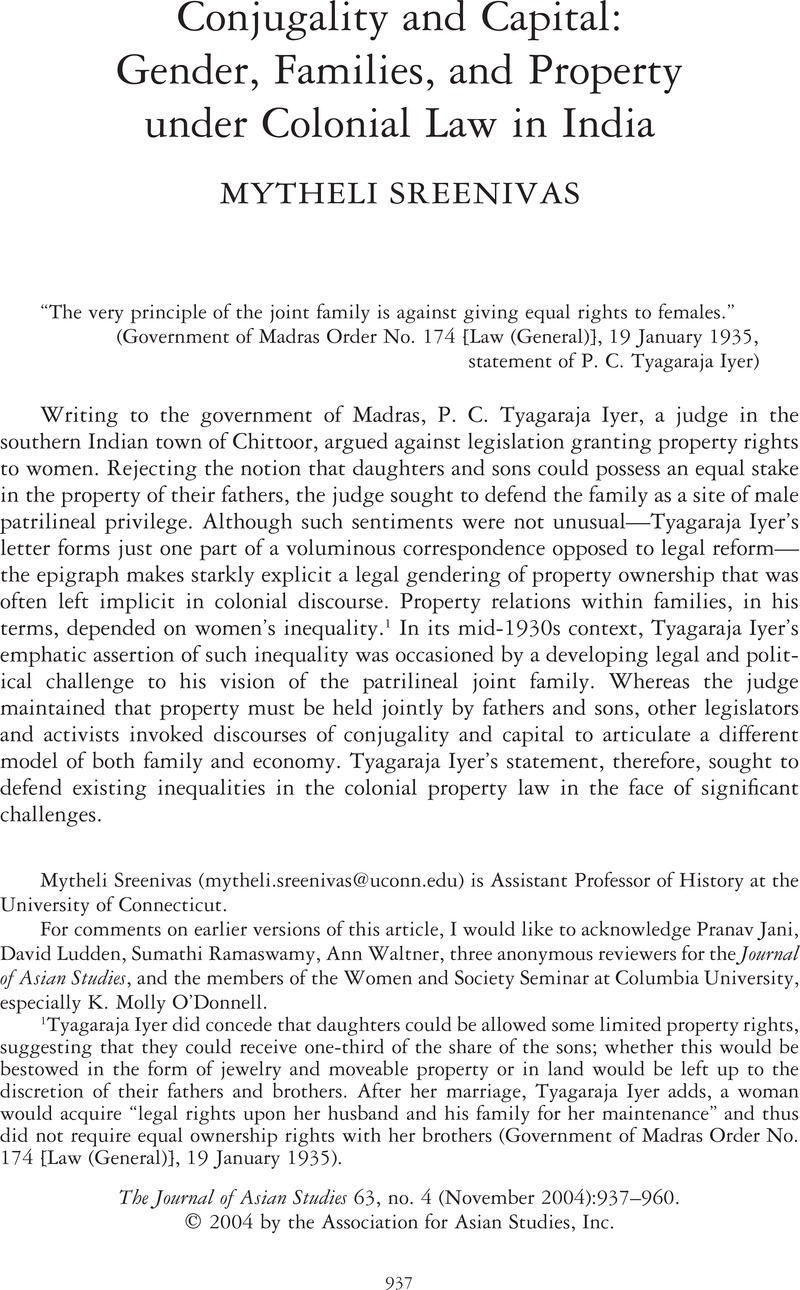Crossref Citations
This article has been cited by the following publications. This list is generated based on data provided by Crossref.
MALLAMPALLI, CHANDRA
2008.
Meet the Abrahams: Colonial Law and a Mixed Race Family from Bellary, South India, 1810–63.
Modern Asian Studies,
Vol. 42,
Issue. 5,
p.
929.
2009.
Marriage and Modernity.
p.
259.
2009.
Stages of Capital.
p.
307.
2009.
Stages of Capital.
p.
199.
2009.
Marriage and Modernity.
p.
311.
2009.
Marriage and Modernity.
p.
23.
2009.
Stages of Capital.
p.
103.
2009.
Stages of Capital.
p.
67.
Newbigin, Eleanor
Denault, Leigh
and
De, Rohit
2009.
Introduction.
The Indian Economic & Social History Review,
Vol. 46,
Issue. 1,
p.
1.
2009.
Marriage and Modernity.
p.
167.
2009.
Marriage and Modernity.
p.
206.
2009.
Stages of Capital.
p.
239.
2009.
Marriage and Modernity.
p.
238.
2009.
Stages of Capital.
p.
232.
2009.
Stages of Capital.
p.
1.
2009.
Marriage and Modernity.
p.
54.
2009.
Marriage and Modernity.
p.
126.
Sharafi, Mitra
2009.
The semi-autonomous judge in colonial India.
The Indian Economic & Social History Review,
Vol. 46,
Issue. 1,
p.
57.
2009.
Marriage and Modernity.
p.
1.
2009.
Stages of Capital.
p.
143.



